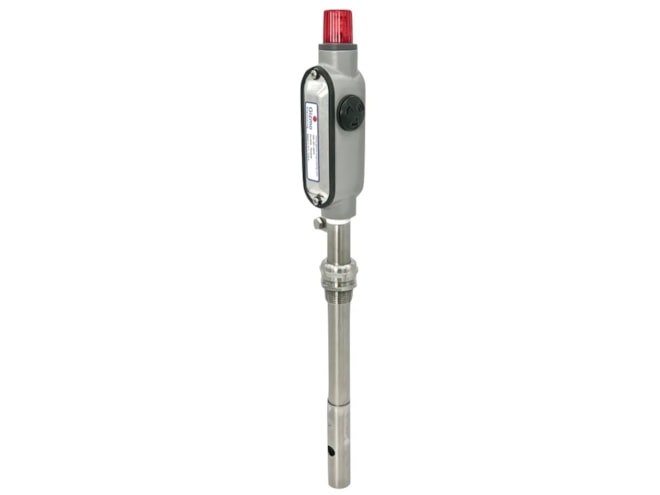
Gizmo Engineering Intrinsically Safe Tank Alarm
-40 to 140°F outdoor temperature range, 2km elevation.

Overview
Features
- 300°F maximum liquid temperature
- Suitable for Class I, Div. 1 hazardous locations
- Painted aluminum enclosure material
- Lexan lens material
- Aluminum bezel, plastic operator pushbutton
- 316 stainless buzzer diaphragm & steel screws for enclosure cover
- PPE (Norpex AX-190) buzzer casing
- Buna rubber buzzer gasket
- Brass reducing bushing
- PVC type (I) LED mount
- Stamped aluminum cover
- Neoprene (natural) cover gasket
- 101dB @ 2ft buzzer volume (SPL)
- IP65 ingress protection
- Includes lithium thionyl chloride battery
- 2,400mA-hr battery capacity
- 7.2VDC battery pack voltage
Description
The Gizmo Engineering Intrinsically Safe Tank Alarm alerts if liquid level is high or low, using uninterruptible battery power to remain always on duty, with an included lithium battery. When the alarm activates, the buzzer sounds and beacon LED flashes. In default mode, the user presses the button to silence the buzzer, while the LED continues to flash as a reminder. The 101 dB buzzer uses a unique warbling sound to cut through factory noise.
Different behaviors are field-selectable using DIP switches on the circuit board, including:
- 30 minute snooze alarm
- "Tank filling" mode shuts off LED and buzzer until the next liquid level event
- Auto or manual reset of the relay after level corrected
- Relay orientation N.O. or N.C.
- Relay output delayed 15 minutes
The pipe and float switch are constructed from 316 stainless steel, and an SS float guard protects the float switch so it can be moved frequently without worry about damage. The SS and Buna float switches are reversible, and a grounding lug is included on stainless steel units.
The uninterruptible battery power allows for installation anywhere. No outlets, electricians, or inspectors are needed. The included lithium batteries have a shelf life of 20 years, and a 2,400mA-hr capacity combined with smart software allow the alarm to sound for up to 25 days. When batteries run low, a unique low-battery signal is given, and the batteries can be replaced by the user even in hazardous locations.
Need Help? Call an engineer at 1-800-884-4967
We're open Mo-Th 8am to 5:30pm. Fr 8am to 5pm ET






















